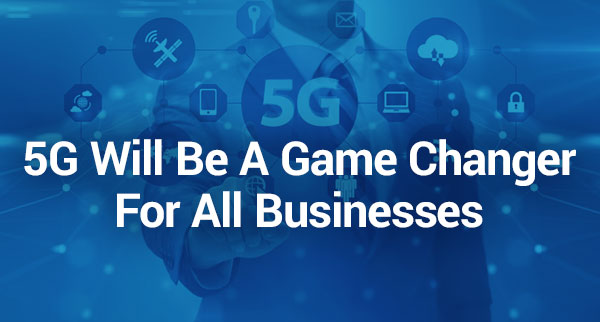For those of you outside or unfamiliar with the technology ecosystem, 5G may just seem like a simple step up from our 4G LTE networks, but that’s only a sliver of the truth!
Many of you will recall the recent super-fast video call that was made last month from the top of Burj Khalifa over Etisalat’s recently launched 5G network. The historic call showed two excited officials having the first 5G video call from Burj Khalifa to the Etisalat headquarters in Abu Dhabi, marveling at the fast seamless connection.
Interestingly in UAE, there are more mobile phone subscriptions than the total population. This clearly implies that several people own more than one mobile phone!
With all residents owning at least one mobile device, the way we live, socialise, consume media and communicate with each other has changed dramatically. This transformation extends far beyond our personal lives, with more than 80 percent of all employees using their smartphones at work. Whilst this is no real surprise, many small-to-medium enterprises (SMEs) are changing the way employees use mobile devices in the workplace, shifting to a ‘mobile-first’ approach and reaching customers better than ever before, in a seamless wired world.
Mobile interactions have surpassed all other media for brand-based interactions. People are now interacting with organisations via mobile devices far more than through desktop. And because of this, organisations are looking at a mobile-first strategy, putting the mobile experience at the core of every customer and employee touchpoint.
In a world of digital nomads coupled with a shift in media consumption, mobile virtualisation has become a necessary and profitable option for SMEs.
Many businesses are starting to understand that a mobile-first approach reaps significant benefits for customer experience. SMEs depend on customer communications; a positive experience means high customer retention rates and ultimately business growth.
Mobile-first also enables SMEs to respond to customer queries and stay in touch at scale and at speed. When customers are increasingly demanding real-time and always-on communication, SMEs that do employ a mobile-first approach gain a competitive advantage over those that rely solely on desktop.
With more businesses, co-workers, and consumers using mobile technology in all facets of life, a stronger network is required to transfer larger amounts of data over the air for faster speeds, reduced congestion and lower latency. And this is where 5G comes in.
The biggest enabler of a mobile-first ecosystem will no doubt be 5G. The race is on, with many of the world’s leading operators rolling out a 5G network to bring more speed and more capacity to consumers and businesses.
Think about a world in which not just people but all things are connected: cars to the roads they are on; doctors to the personal medical devices of their patients; augmented reality available to help people shop and learn and explore wherever they are. This requires a massive increase in the level of connectivity.
Economists estimate the global economic impact of 5G in new goods and services will reach $12 trillion by 2035 as 5G moves mobile technology from connecting people to people and information, towards connecting people to everything.
5G promises a sea change in mobile networking and promises exponentially faster download speeds, greater latency, and better reliability. Building on the capabilities of 4G, 5G boasts speed uplifts of around 100-150Mbps, with some users able to achieve speeds of 1Gbps on their 5G, enabled smartphones. As well as improved bandwidth, a key feature of the technology is greatly reduced levels of network latency, making 5G more responsive than other mobile technology standards before it.
For SMEs, this will mean steaming high-resolution video, audio, and images with practically no lag. 5G will be a game changer for businesses across virtually every industry and will empower the next generation of skilled workers across a global footprint.
5G is also expected to allow for up to 1 million devices functioning at full capability in 1 square kilometer.



Comments are closed.